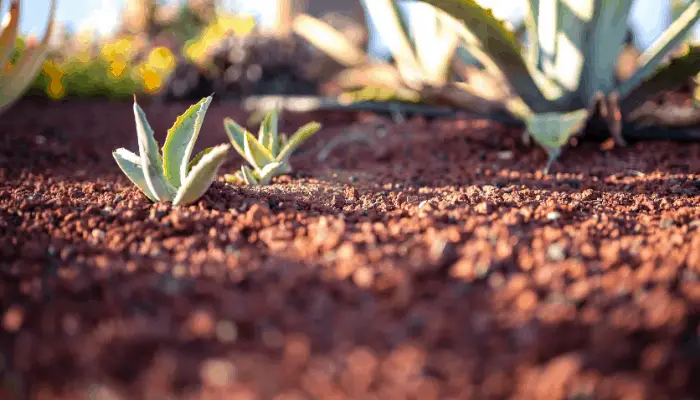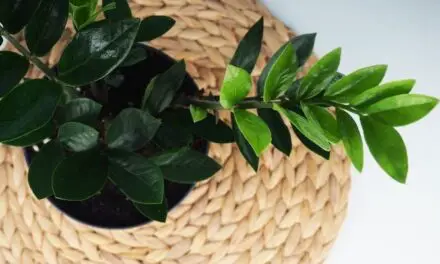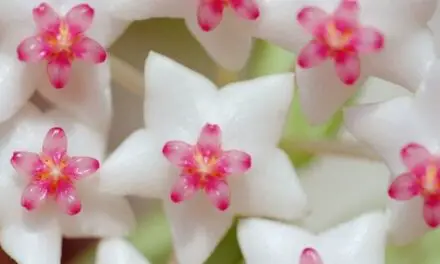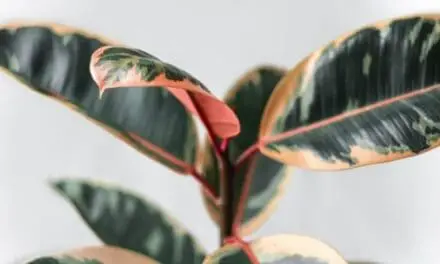Red soil is naturally rich in nutrients and great for growing plants as long as you don’t overwater it and mix in loads of organic material like aged bark and composted leaves so that the soil isn’t too loose or too tightly packed for plants to grow.
Table of Contents
Is Red Soil Good For Plants?

People usually think that red clay soil is a bit of a disaster to work with and generally not good for plants.
And this is because it does tend to clump together and can be a bit of a nightmare to work with when it’s wet.
However, you just need to understand how to enhance this soil so it becomes much easier to work with and much better for the health of your plants.
This type of soil is naturally rich in nutrients and if you take the time to improve its texture and consistency, it can provide a thriving environment for all types of plants.
Related Article: Is Red Clay Soil Good For Vegetables?
What Is Red Soil?
Red soil gets its color from iron and is formed through the process of weathering.
When metamorphic rocks and ancient crystalline erode, they combine to form this lovely soil.
Almost 11% of India’s land is covered in this red soil.
It can also be found in China, Japan, Africa, some parts of South America, and South Asia.
It is an extremely productive soil that has a high content of minerals and can hold on to water.
This soil will not easily dry once wet and that can make it difficult to work and more friendly towards drought-resistant plants like succulents.
However, the consistency of red soil can be improved over time by adding organic material.
It’s also important not to walk on this type of soil as it can compact further and make it even more difficult for the roots of plants to receive oxygen and nutrients from the ground.
What Are The Characteristics Of Red Soil?
There are three main characteristics of this type of soil that make it stand out from other types of soil:
- High in iron oxide
- Acidic
- Low in calcium
These three characteristics are what give the red soil its natural appearance and make it a good choice for plants.
However, to make it more suitable for growing a wider range of plants, you will need to do a few things to improve the quality of red soil.
And we’ll discuss those things in more detail a little later.
Is Red Soil Acidic Or Alkaline?
Red soil is on the acidic side.
This is because of the nature of the parent rock it has come from.
Apart from that, rainfall also drains the calcium from the soil which makes it even more acidic.
What Is The Reason For The Red Color Of Red Soil?
The rich iron content gives this soil its beautiful red color.
Apart from that, it’s also because of oxidizing conditions which make the iron oxide or rust develop even further in the soil.
And this further enhances the red color of the soil.
However, the reason for the red color also due to diffusion rather than the presence of iron oxide itself.
What Plants Grow Well In Red Soil?
Plants that are hardier and can survive in heat tend to thrive in this soil type.
This is because it’s a type of clay with a fine texture that retains water.
So, if you want to grow plants in red soil with some partial shade then the best options to do that are:
- Japanese anemones
- Aucuba
- Ivy
- Ajuga
- Vinca
- Hosta
- Dryopteris (fern)
These plants will have to be kept in partial shade if you want them to grow well.
However, some plants in red soil can also thrive in full shade.
These plants include:
- Mahonia
- Viburnum
- Hydrangea
- Chaenomeles
These are some fairly hardy plants that can thrive in this soil – even in complete shade.
So, if you want to grow plants without having to do too much to enhance the soil first, then these are your best options.
Many vegetables can also do well in red soil.
Vegetables that are harvested in either summer or autumn are the best choice.
If you opt for earlier varieties then your yield will not be that high and it may also be of lower qualities.
Some vegetables that can be grown in red soil include:
- Cabbage
- Leeks
- Cauliflowers
- Onions
- Squashes
- Pumpkins
One thing to keep in mind is that you shouldn’t provide a lot of shade to your vegetables.
This is because they don’t like the shade and need plenty of sunlight to thrive and grow well.
What Are The Advantages And Disadvantages Of Red Soil For Growing Plants?
Every type of soil has both good and bad qualities.
Understanding this is important for matching the right type of soil with plants.
Let’s first look at some of red soil’s better qualities.
The Advantages Of Red Soil
When growing drought-resistant plants, perhaps the biggest advantage of this soil is that it is good at retaining moisture.
This means that you don’t need to water the soil all the time as it tends to hold enough water to help hardier plants like succulents to grow.
You should be careful not to over-water red soil as it can easily end up waterlogged.
Apart from this, another advantage is that it is rich in nutrients that many plants need to grow well.
The reason for this nutrient-rich quality is that the particles of this soil are negatively charged.
This quality attracts positively charged particles to the soil.
Nutrients that have positively charged particles include magnesium, calcium, and potassium.
These nutrients get attracted to the soil and the soil holds them, which in turn, nourishes the plants.
The Disadvantages Of Red Soil
this soil type also has some disadvantages which can make it difficult for some plants to grow.
One disadvantage of this soil is that it compacts easily.
Due to its fine texture, it can be difficult for the roots of plants to receive enough oxygen and nutrients to grow.
This is why it’s always advised to improve this type of soil by adding organic matter so that the roots of plants can grow freely.
As mentioned earlier, red soil can easily become waterlogged.
So the best harvesting time is usually summer and autumn before winter approaches.
Spring is also not an ideal time to harvest because the soil warms extremely slowly in spring and it needs to warm enough to provide the ideal conditions for plants to thrive.
These aren’t massive disadvantages but things that you need to keep in mind and workaround if you want your plants and vegetables to grow well in red soil.
How Do You Improve Red Soil?
With a little time and effort, red soil can definitely be improved and made a lot more hospitable to plants.
The best way to improve it is to keep adding organic matter to it whenever you can.
Organic matter like manure, bark, sawdust, peat moss, and compost works well to improve the texture of packed red soil.
Here is what organic matter can do to enhance the soil:
- Encourages a healthy microbial environment
- Encourages insects
- Improves aeration
- Improves drainage
- Adds more nutrients
One of the best improvements organic matter makes is that of drainage.
Red soil doesn’t drain very well and organic matter helps by changing the texture of the red soil and making it looser and less packed.
Mulching Helps
Apart from adding organic matter to the soil, you can also mulch once you have planted.
Mulching helps because red soil can tend to form a hard crust when it dries out too much.
And this eventually leads to water being repelled and this is not good for the plants at all.
However, mulching after planting will help control the temperature, block any weeds, and will aid in retaining moisture in the soil.
So definitely give mulching a go to improve your red soil even further.
Level The Soil
To avoid damaging the structure of red soil it’s important to keep raking to a minimum.
Too much raking is likely to bring wet lumps of clay to the surface and make it difficult for plants to grow.
By leveling the soil at first you will dramatically reduce the amount of raking that you will have to do later.
This will help maintain the soil’s structure and create a much better environment for plants to grow.
Don’t Add Sand
One thing to note is that you shouldn’t add sand when trying to improve red soil.
You would have to add a huge amount of sand in order to change the texture of red soil, so it’s usually pretty pointless.
Plus, sand can often make red soil unstable and an even worse environment for plants to grow.
So, it’s always a better option to add organic material when trying to improve red soil.
Try Garden Lime
Another way to enhance the texture of red soil is to add lime to it.
This will raise the soil’s pH level and make it more alkaline while reducing clumpiness and encouraging the formation of larger soil particles that will improve drainage and make it less compact and easier to work with.
Conclusion
Red soil can be a little challenging for growing some types of plants and will probably need a little love and care before you start seeing some good results.
But once you put in the work to enhance it, red soil can be a rich growing medium that holds on to moisture and nutrients and creates great growing conditions for a wide range of plants.




